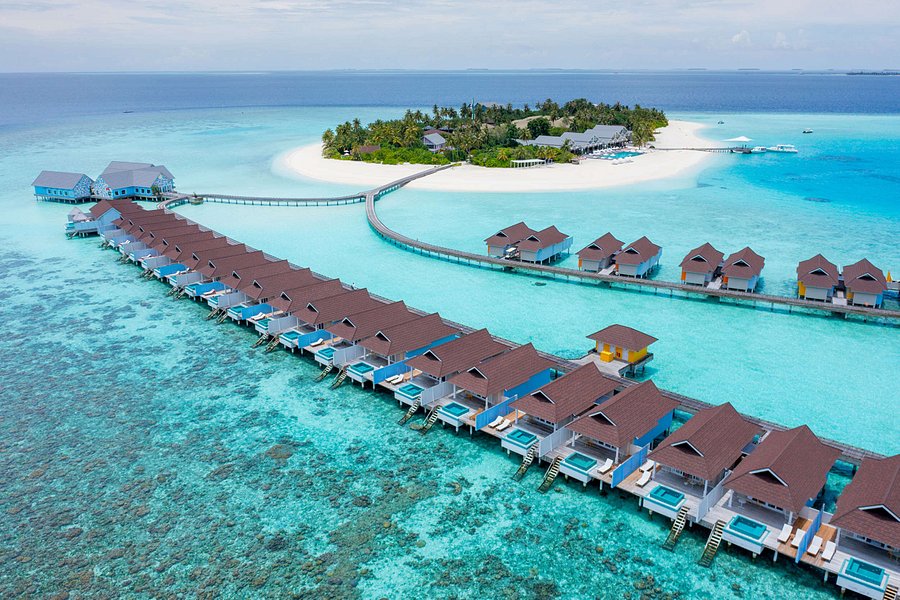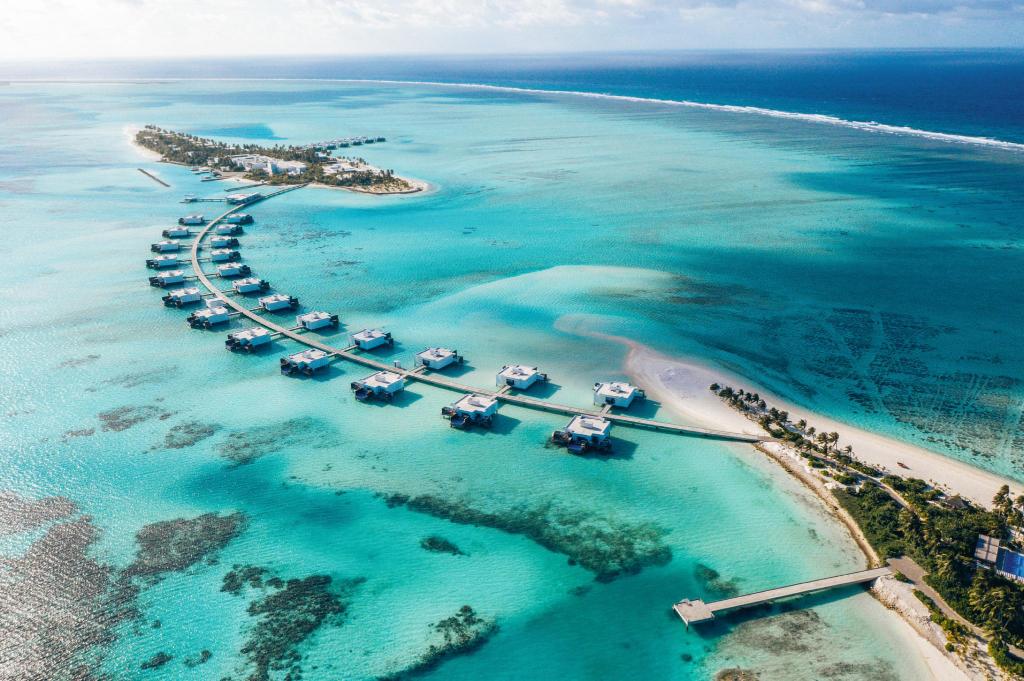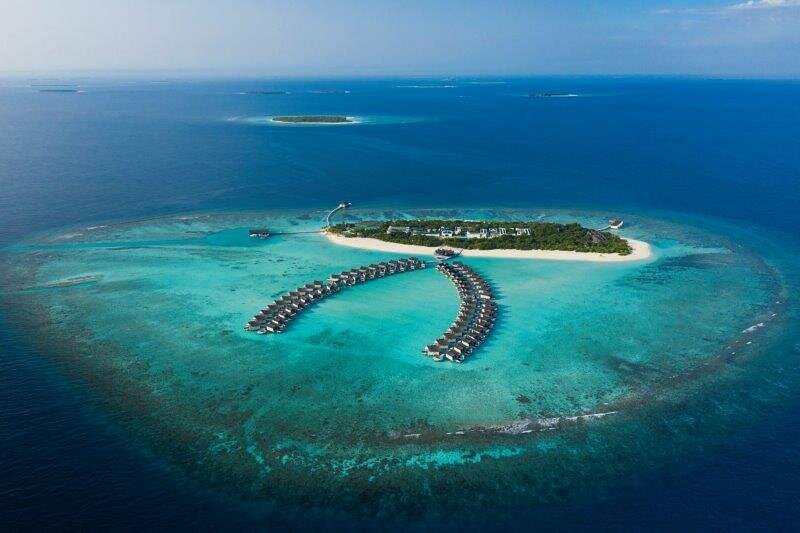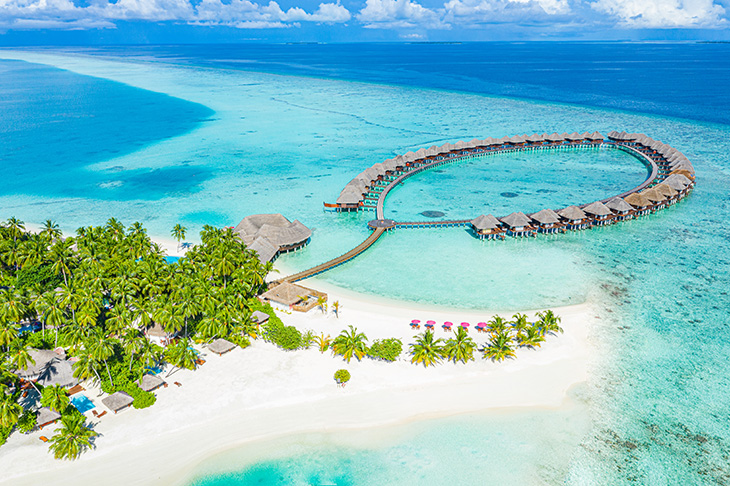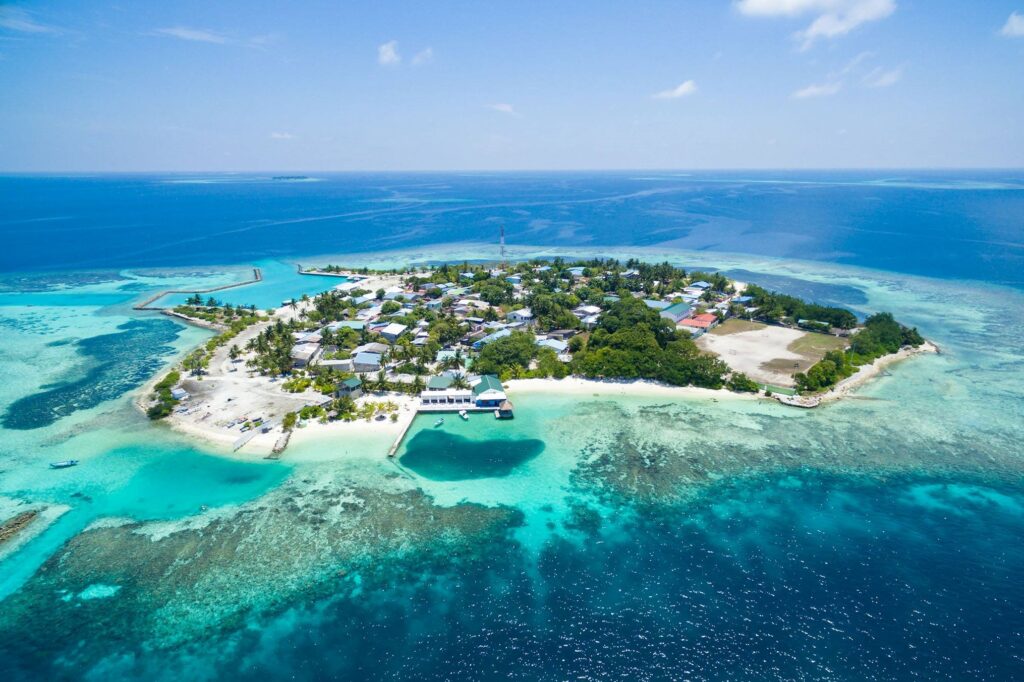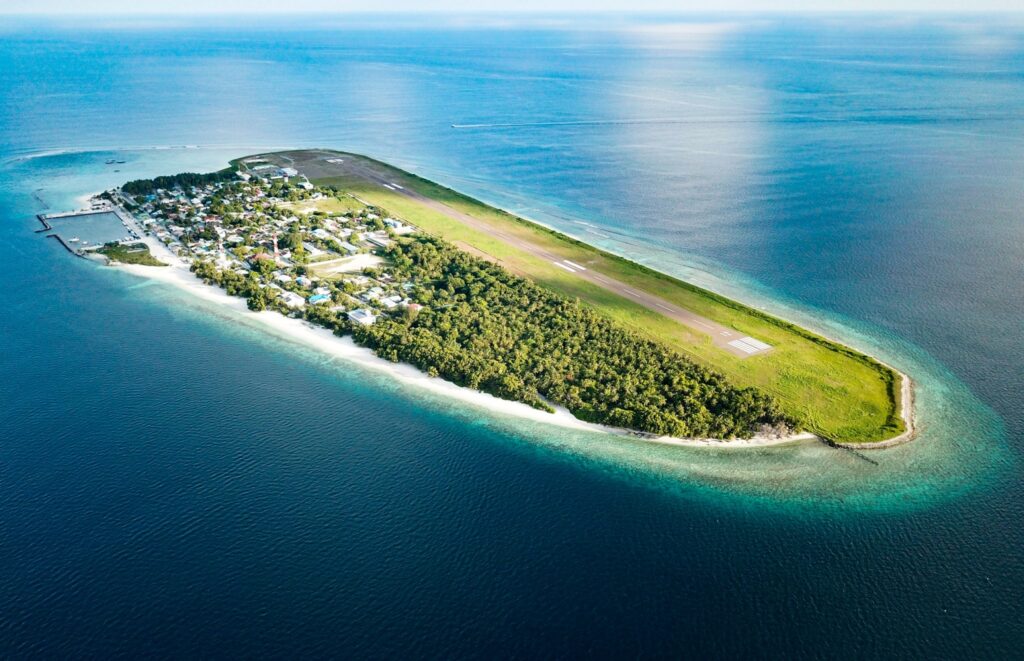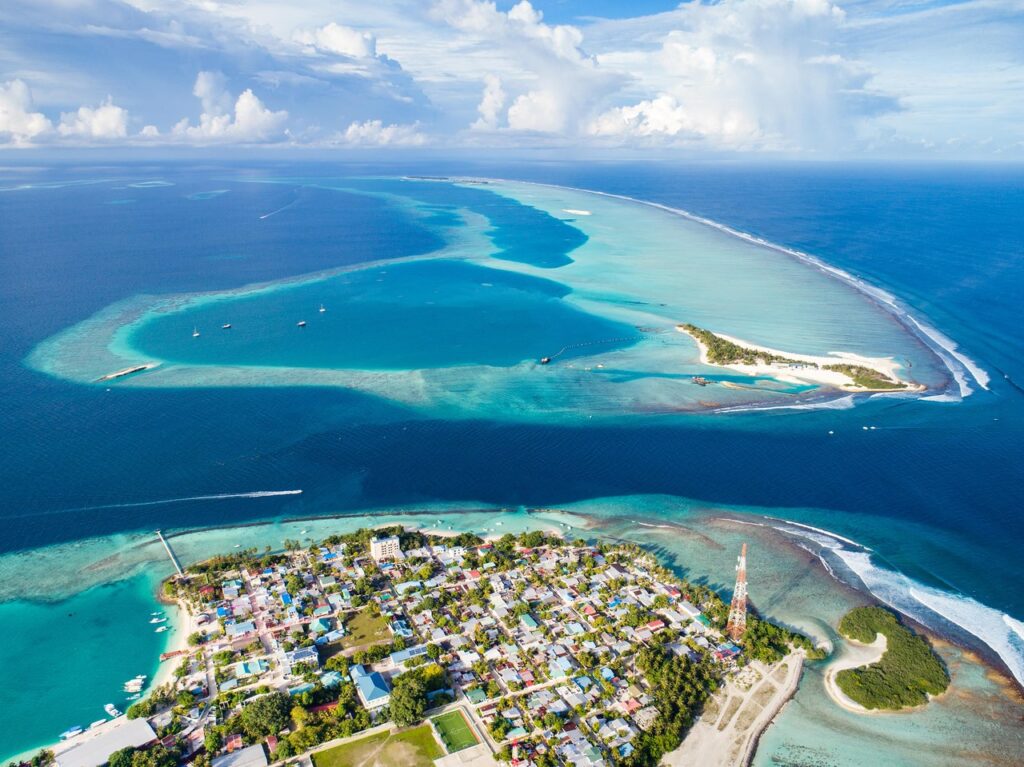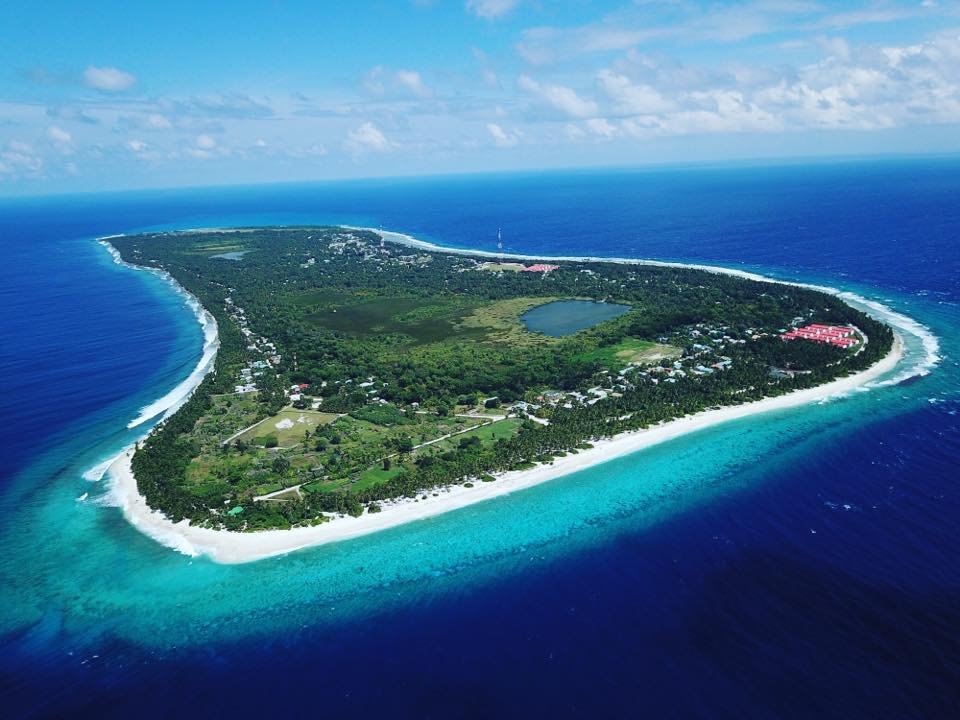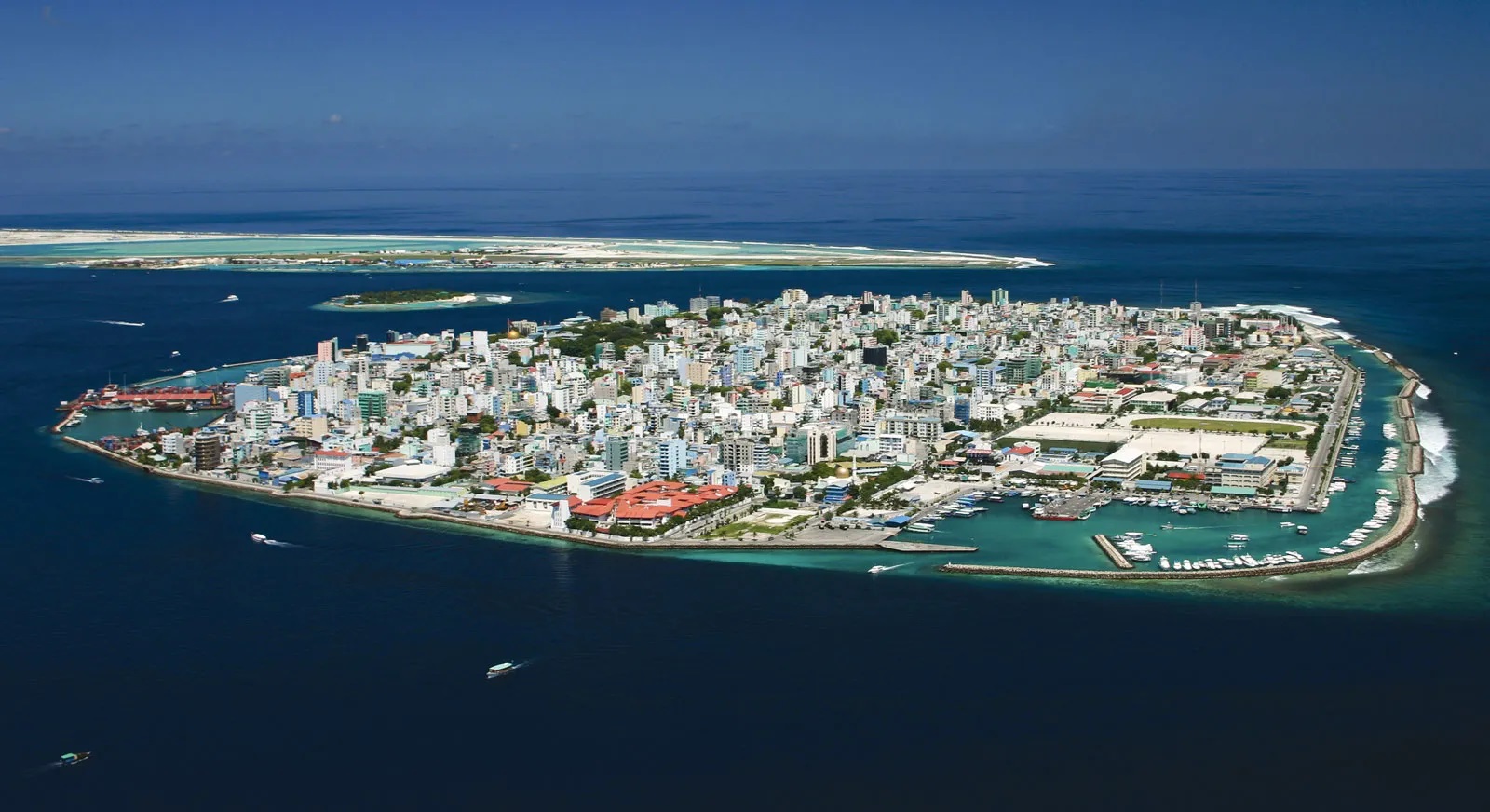
DISCOVER THE MALDIVES
About Maldives
The Maldives, a tropical paradise of pristine beaches, are an archipelago of 1,192 coral islands grouped into 26 coral atolls (200 inhabited islands, plus 80 islands with tourist resorts) in the Indian Ocean. They lie south-southwest of India and are considered part of Southern Asia.
Tourism in Maldives
Tourism is the largest economic industry in the Maldives. A tourist resort in the Maldives consists of an exclusive hotel on its own island, with its population entirely based on tourists and work force, with no local people or houses. These islands developed for tourism are approximately 800 by 200 metres in size and are composed of sand and coral to a maximum height of about 2 metres above the sea. In addition to its beach encircling the island, each island has its own “house reef” which serves as a coral garden and natural aquarium for scuba divers and snorkelers. The shallow water enclosed by the house reef also serves as a large natural swimming pool and protects swimmers from the ocean waves and strong tidal currents outside the house reef.
Hotel in Maldives
The new generation of Maldives hotels are taking this formula one step further. It’s not enough for just villas to be overwater anymore. Spas dangle above lagoons now too, with glass floors allowing guests to spy turtles as they enjoy a massage. The classic pool bar has been outdone by a beachside treehouse bar, and restaurants have relocated underwater. Steps towards sustainability are also commonplace too. Most hotels have their own conservation projects and coral programmes. One is even completely solar powered.
What to do in Maldives
The Maldives is renowned for its incredible diving opportunities. The crystal clear water and shallow lagoons are perfect for snorkelling, while the reef walls offer a kaleidoscope of sea life for more experienced divers. The Maldives have an amazing diversity of sea life, with corals and over 2000 species of fish, ranging from reef fish and reef sharks to moray eels, rays and whale sharks. The island’s many sheltered lagoons also provide the perfect destination to enjoy an adventure-filled family holiday or romantic getaway for two.
Attractions in Maldives
Diving Bluetribe Moofushi, Sun Island beach, Alimatha Island, Manta Point, Banana Reef, Grand Friday Mosque, Hukuru Miskiiy (Old Friday Mosque), HP Reef, National Museum, Veligandu Island beach, Bodu Mora, Hulhumale, Mulee Aage, Utheemu Ganduvaru, Biyadoo Island, Tiny Island Marine Conservation Centre, Kuda Bandos, Muraka Diving
Geography of Maldives
The Maldives archipelago consists of 1190 tiny islands scattered across the Indian Ocean. Only 185 of these islands are inhabited, while the others are used largely for tourism and agriculture. The atolls are composed of live coral reefs and sand bars perched atop a 960km submarine ridge, while the land features lush tropical vegetation with abundant local coconut palms. With an average ground level of 1.5m above sea level, the Maldives is by far the lowest country on earth and as such has a very fragile ecosystem. The capital and largest city of the Maldives is Male.
Climate in Maldives
The tropical climate is influenced by monsoons, although bright sunny weather with a light sea breeze can be expected most days.
Temperature: 30°C all year round | Sea temperature: 22°C to 28°C
Languages in Maldives
The locals speak Dhivehi, with English widely spoken in areas frequented by tourists.
Culture in Maldives
The local culture features a lively mix of South Indian, Sinhalese and Arab influences that is reflected in the traditional music, cuisine and art of the island.
Money/Currency in Maldives
The monetary unit is the Maldivian Ruffiyaa (MVR), while international credit cards are widely accepted by resorts.
Driving in Maldives
Most tourists will land in the capital, Male, and will be transferred to their hotel either by seaplane or boat. These two means of transport are widely used for most trips between islands.
Direct Flights to/from Maldives
There are frequent direct flights to Male from most international destinations including India, Sri Lanka, Dubai and major airports in South-East Asia, as well as an increasing number of charters from Europe.

